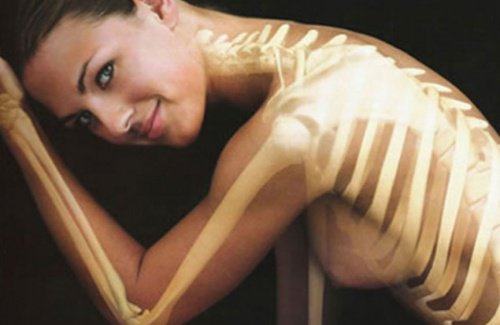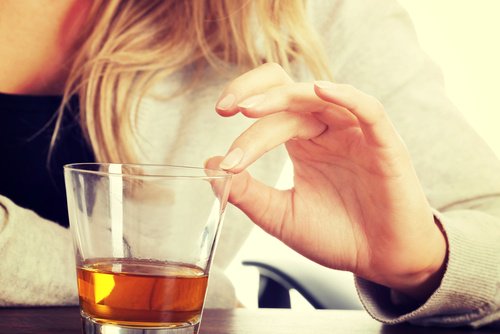A Diet for Weak Bones and Joints


Reviewed and approved by the doctor Maricela Jiménez López
Even when you’re in perfect health, your bones and joints can start to fail. Weak bones can be due to the wear and tear of time, but it’s also caused by a poor diet that lacks all the necessary nutrients.
If you don’t consume enough calcium or antioxidants, your skeletal system will show it sooner or later.
Although we learn more about good nutrition, it’s hard to perfect your meals so that they contain all of the benefits you’re looking for.
That’s why it’s best to plan them in advance and take all your goals into account.
To reach them, we want to propose some tips that will help you design the best diet for your purposes. They’re easy to carry out and also very useful.
Do you want to know what they are?
Diet Tips to Strengthen Your Bones and Weak Joints
 Avoid excessive salt
Avoid excessive salt
It’s nearly impossible to have a salt-free diet, because all processed foods contain this substance. The trouble is the high sodium content.
It causes you to lose more calcium through your urine, making it hard to maintain your bone density.
If you find it difficult to give up the taste of this seasoning, we suggest you switch to sea salt, as it is not refined. That means it contains minerals that counteract the power of sodium and also doesn’t cause fluid retention.
See also: 8 Amazing Benefits of Sea Salt
Moderate your consumption of alcohol

Excess alcohol consumption keeps you from absorbing calcium and vitamin D. Both of these are indispensable when it comes to improving weak bones and joints.
That doesn’t mean you should give up on having a beer when you’re out at a social event. Eliminating things you enjoy is almost never a good idea.
The emotional reward system is an important component to making good decisions. Ideally, you shouldn’t have more than one beer or glass of wine a day.
Caffeine promotes calcium loss
Caffeine is more serious for women after they have gone through menopause.
As you know, this is a delicate time for women because of the many hormonal and cellular changes that take place.
At this time, osteoporosis and osteoarthritis become more likely. Drinking more than two cups of coffee a day can accelerate the loss of calcium in two ways.
On the one hand, it causes calcium to be eliminated through the urine, and on the other, it prevents it from being absorbed.
Excess protein intake increases bone loss
Many weight loss diets advise people to add more protein to their recipes. This is because protein is easy to digest, it prevents fluid retention, and it can favor the loss of abdominal fat.
When you exceed the proper amount, however, the chemicals that are produced during digestion can damage your bones.
Ideally, you should combine high-protein ingredients with fruits and vegetables that have a high content of minerals like calcium and magnesium.
We recommend reading: 4 breakfast protein smoothies
Exercises for Weak Bones and Joints

Your skeletal system also needs exercise to stay healthy and improve its well-being.
When rehabilitation is the goal, you need to be sure that you get back into a routine gradually and progressively. After that, it’s best to choose activities where your body is used as leverage.
In this sense, there’s nothing better for you than walking or biking.
With both exercises, you’ll be training your ability to support your own body weight while also improving circulation, so your bones and joints will be better sustained.
After some time, you can start adding some resistance with activities such as hiking or strength training using weights.
Both exercises are more demanding on your joints, which means you have to perform them with care and professional advice, if possible. There are monitors and technicians that can help you identify the best exercise routine for your body.
As you can see, taking care of your skeletal system is easier than it looks. All you need to do is monitor the consumption of certain foods.
If you want to do a little more, just add a few simple exercises that will add to the benefits of your new habits.
All cited sources were thoroughly reviewed by our team to ensure their quality, reliability, currency, and validity. The bibliography of this article was considered reliable and of academic or scientific accuracy.
- Yao P, Bennett D, Mafham M, Lin X, Chen Z, Armitage J, Clarke R. Vitamin D and Calcium for the Prevention of Fracture: A Systematic Review and Meta-analysis. JAMA Netw Open. 2019 Dec 2;2(12):e1917789. doi: 10.1001/jamanetworkopen.2019.17789. PMID: 31860103; PMCID: PMC6991219.
- Yuan S, Michaëlsson K, Wan Z, Larsson SC. Associations of Smoking and Alcohol and Coffee Intake with Fracture and Bone Mineral Density: A Mendelian Randomization Study. Calcif Tissue Int. 2019 Dec;105(6):582-588. doi: 10.1007/s00223-019-00606-0. Epub 2019 Sep 4. PMID: 31482193.
- Richter M, Baerlocher K, Bauer JM, Elmadfa I, Heseker H, Leschik-Bonnet E, Stangl G, Volkert D, Stehle P; on behalf of the German Nutrition Society (DGE). Revised Reference Values for the Intake of Protein. Ann Nutr Metab. 2019;74(3):242-250. doi: 10.1159/000499374. Epub 2019 Mar 22. PMID: 30904906; PMCID: PMC6492513.
This text is provided for informational purposes only and does not replace consultation with a professional. If in doubt, consult your specialist.








